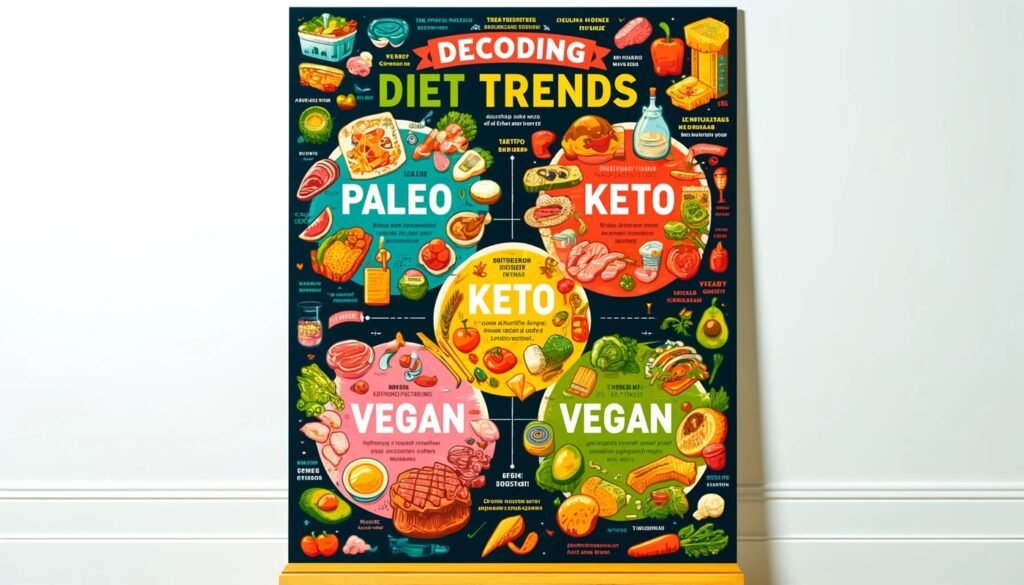
With a myriad of diet trends each claiming supreme health benefits, it can be overwhelming to understand what each entails and whether it’s the right choice for your nutritional needs. From Paleo to Keto, and Vegan diets, this blog aims to decode these popular diet trends, providing an unbiased look at their principles, benefits, and potential drawbacks.
Contents
1. Paleo Diet: The Caveman Blueprint
Overview: The Paleo diet is based on the idea that humans should eat more like our ancient ancestors, which means focusing on foods that could be hunted or gathered such as meats, fish, nuts, leafy greens, regional veggies, and seeds.
Benefits:
- Promotes eating whole foods and eliminates processed foods which can lead to health improvements.
- High in protein and fiber which can help in weight management.
Drawbacks:
- Can be restrictive, limiting food groups such as dairy, grains, and legumes which can lead to nutritional deficiencies.
- May be challenging to sustain long-term due to its restrictive nature.
2. Keto Diet: Fat-Fueled Living
Overview: The ketogenic diet is a high-fat, low-carbohydrate diet that aims to put the body into a metabolic state called ketosis, where it burns fat for energy instead of carbohydrates.
Benefits:
- Can lead to quick weight loss as the body burns fat for fuel.
- May help in reducing blood sugar levels and improving insulin sensitivity.
Drawbacks:
- Can cause initial side effects such as fatigue, headaches, and constipation, often referred to as the “keto flu.”
- Long-term adherence to such a high-fat diet can have potential heart health risks.
3. Vegan Diet: Plant-Powered Eating
Overview: The vegan diet excludes all animal products, including meat, dairy, and eggs, focusing instead on plant-based foods like vegetables, fruits, grains, and legumes.
Benefits:
- Supports animal welfare and has a lower environmental footprint.
- Linked to a lower risk of heart disease, high blood pressure, and certain types of cancer.
Drawbacks:
- Can lead to deficiencies in vitamins B12, D, calcium, iron, and omega-3 fatty acids if not well-planned.
- May be difficult to eat out or find convenient food options.
Conclusion
Choosing the right diet depends largely on individual health needs, lifestyle preferences, and ethical considerations. It’s important to consider not just the short-term benefits but also the long-term sustainability of any diet before making a commitment.
FAQs about Diet Trends
Q: Which diet is best for weight loss?
A: Weight loss success can occur with any of these diets if they create a calorie deficit; however, the keto diet may offer quicker results due to its fat-burning state of ketosis.
Q: Are these diets safe for everyone?
A: Individuals with specific health conditions should consult with healthcare providers before starting a new diet, especially diets that significantly restrict food groups, like keto and vegan.
Q: How can I ensure nutritional balance while following these diets?
A: Consider consulting a nutritionist to help plan a diet that meets all your dietary needs and includes a variety of foods to ensure nutritional balance.
Q: Can I switch between these diets?
A: Switching diets can be done, but it’s best to make changes gradually and with consideration to how your body adjusts to dietary shifts.